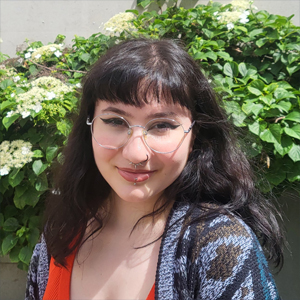Proteomic variation in heart tissues
Induced pluripotent stem cells, or iPSCs, can be used to model tissues and disorders, such as heart diseases. However, the human heart is complex, with several regions and cell types. Therefore, analyzing single cardiac cells can be challenging.
Lizhuo Ai, Aleksandra Binek and Vladimir Zhemkov of the Cedars-Sinai Medical Center and a team in the U.S. used this approach to analyze heart cells throughout various stages of development. They published their findings in Molecular & Cellular Proteomics. The authors differentiated iPSCs into cardiomyocytes, the muscle cells of the heart, and analyzed their proteome at various time points using mass spectrometry.

The team detected proteomic differences between groups of iPSC-derived cardiomyocytes, or iCMs, at the end of their three-week differentiation period, suggesting that they had developed into multiple cell subtypes. Many differentially expressed proteins between two of these subtypes functioned in extracellular vesicles, called exosomes, which transport biomolecules such as DNA and proteins to other cells. They also compared iCMs to those isolated from adult human hearts, or aCMs. They found the two cell types shared many proteins involved in muscle function, but that aCMs had a higher proportion of mitochondrial proteins, suggesting that iCMs are metabolically immature.
Furthermore, detailed analysis revealed that a few human adult heart cells expressed markers that traditionally identify heart and brain cells, which may represent a newly discovered cell type. These results could mean that heart cells are more diverse than scientists originally thought and could underlie some functions such as exosome formation. The ability of iCMs to recreate much of the cardiomyocyte proteome, combined with the diversity of tissues they produce, make iPSCs appealing candidates for studying and treating human heart diseases.
Enjoy reading ASBMB Today?
Become a member to receive the print edition four times a year and the digital edition monthly.
Learn moreGet the latest from ASBMB Today
Enter your email address, and we’ll send you a weekly email with recent articles, interviews and more.
Latest in Science
Science highlights or most popular articles

Bacteriophage protein could make queso fresco safer
Researchers characterized the structure and function of PlyP100, a bacteriophage protein that shows promise as a food-safe antimicrobial for preventing Listeria monocytogenes growth in fresh cheeses.

Building the blueprint to block HIV
Wesley Sundquist will present his work on the HIV capsid and revolutionary drug, Lenacapavir, at the ASBMB Annual Meeting, March 7–10, in Maryland.

Gut microbes hijack cancer pathway in high-fat diets
Researchers at the Feinstein Institutes for Medical Research found that a high-fat diet increases ammonia-producing bacteria in the gut microbiome of mice, which in turn disrupts TGF-β signaling and promotes colorectal cancer.

Mapping fentanyl’s cellular footprint
Using a new imaging method, researchers at State University of New York at Buffalo traced fentanyl’s effects inside brain immune cells, revealing how the drug alters lipid droplets, pointing to new paths for addiction diagnostics.

Designing life’s building blocks with AI
Tanja Kortemme, a professor at the University of California, San Francisco, will discuss her research using computational biology to engineer proteins at the 2026 ASBMB Annual Meeting.

Cholesterol as a novel biomarker for Fragile X syndrome
Researchers in Quebec identified lower levels of a brain cholesterol metabolite, 24-hydroxycholesterol, in patients with fragile X syndrome, a finding that could provide a simple blood-based biomarker for understanding and managing the condition.

